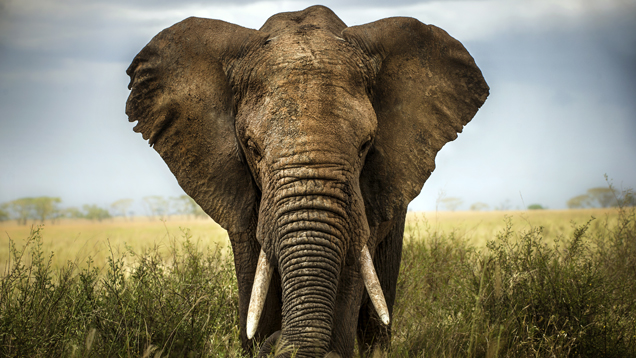Science adventures: aliens and elephants
 CREDIT: LARA_ZANARINI / ISTOCK / THINKSTOCK
CREDIT: LARA_ZANARINI / ISTOCK / THINKSTOCKAfrican Elephants like this one were recently found to have 20 times the amount of a tumour-suppressing gene than humans, helping explain their low cancer mortality.
While many discoveries continue to be made in science, new outer space research and information on the DNA of elephants took top spot this week.
Aliens
In 2009, the Kepler space probe was launched, meant to look for exoplanets, or planets outside our solar system, by looking at the tiny fluctuations of light sent into space by each star.
On Earth, stars look as though they twinkle due to distortions while moving through the atmosphere. In space, the lack of light pollution, except from the stars themselves, and no twinkling, means astronomers can view the night sky with greater precision than using Earthbased telescopes.
The project was a resounding success.
Even after a set of components failed, Kepler’s mission was altered, and it continued to pump out data for scientists to study.
Early in 2015, NASA celebrated the 1000th confirmed exoplanet due to the probe’s hard work, staring at the same spot in space for four years.
But in all the data gleaned from outer space, one star’s light pattern looked unique from an early point.
Now, after years of failing to prove the odd light fluctuations as a natural phenomenon, scientists have stated that they may have discovered alien mega-structures orbiting another star.
Researchers said the data was consistent with the debris a young star would have when forming planets, but the star in question is too old for that.
Another theory was that a swarm of comets had recently entered the system, but that was deemed a statistical improbability.
In the multiple novels by Sir Arthur Conan Doyle, Sherlock Holmes states time and time again, “Once you eliminate the impossible, whatever remains, no matter how improbable, must be the truth.”
That’s the situation researchers from across the globe are now in with this new information. What remains might just be an alien civilization.
Elephants
In a recent discovery, scientists have learned why elephants, who by their very size are at an increased chance for cancer, rarely actually succumb to the devastating disease.
After several years of rigorous study partnered between several top US colleges, cancer centres and the Ringling Brothers Center for Elephant Conservation, researchers found that their genes were keeping them healthy.
The tumour suppressor gene p53 is well known in cellular biology; humans and many other mammals have a single pair of this gene in their genome, two copies in each strand of our DNA, that protect the entire body from the possibility of cancer forming cells.
Elephants, it turned out, had 20 pairs of the gene. The excess number of copies was ready to be scanned by cellular machinery to be duplicated into cancer killing proteins by the cell’s ribosomes.
In tests to determine the potential cancer fighting benefits of an increase in the p53 gene, elephant’s white blood cells were tested under cancer inducing conditions. When compared to humans, the elephant cells stopped cancerous cells before they multiplied and created further harm.
Ribosomes are complex protein making factories that go along the RNA chain, the single stranded form of DNA. Ribosomes activated when necessary due to molecules exiting and entering the cell giving specific signals, composed of RNA strands and proteins, which fold and shape new genetic material in the cell.
These types of findings may be of help to those suffering from Li– Fraumeni syndrome, a rare disorder in which one of the two copies of p53 has been damaged or is missing entirely, leading to a lifetime chance of a variety of cancers.
In conclusion, an increase of gene p53 in the genetic structure of a cell directly leads to an increase in tumour suppression. With these findings, researchers can now start looking at how to create a gene therapy to limit or eliminate the risk of certain cancers for Li-Fraumeni sufferers.














